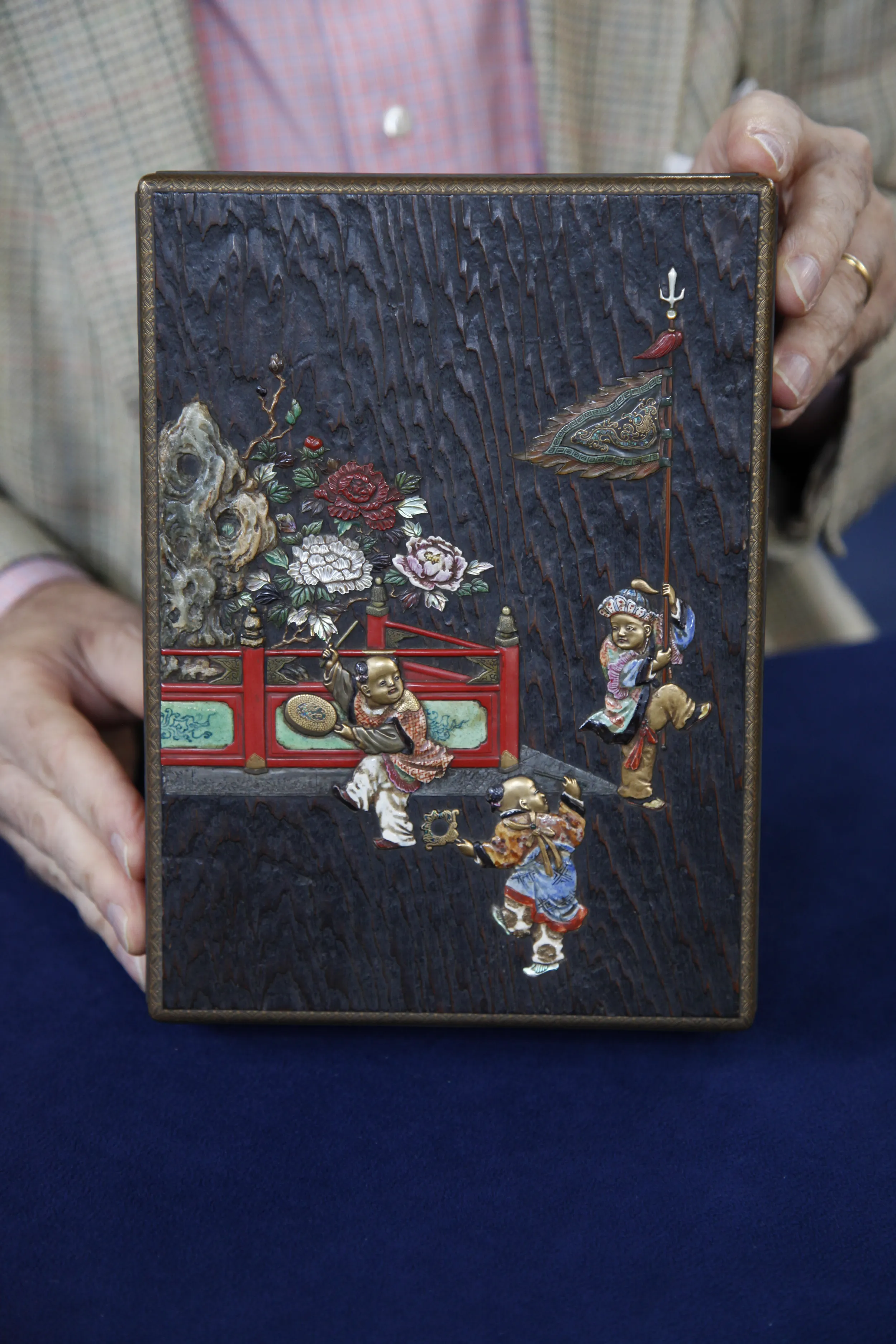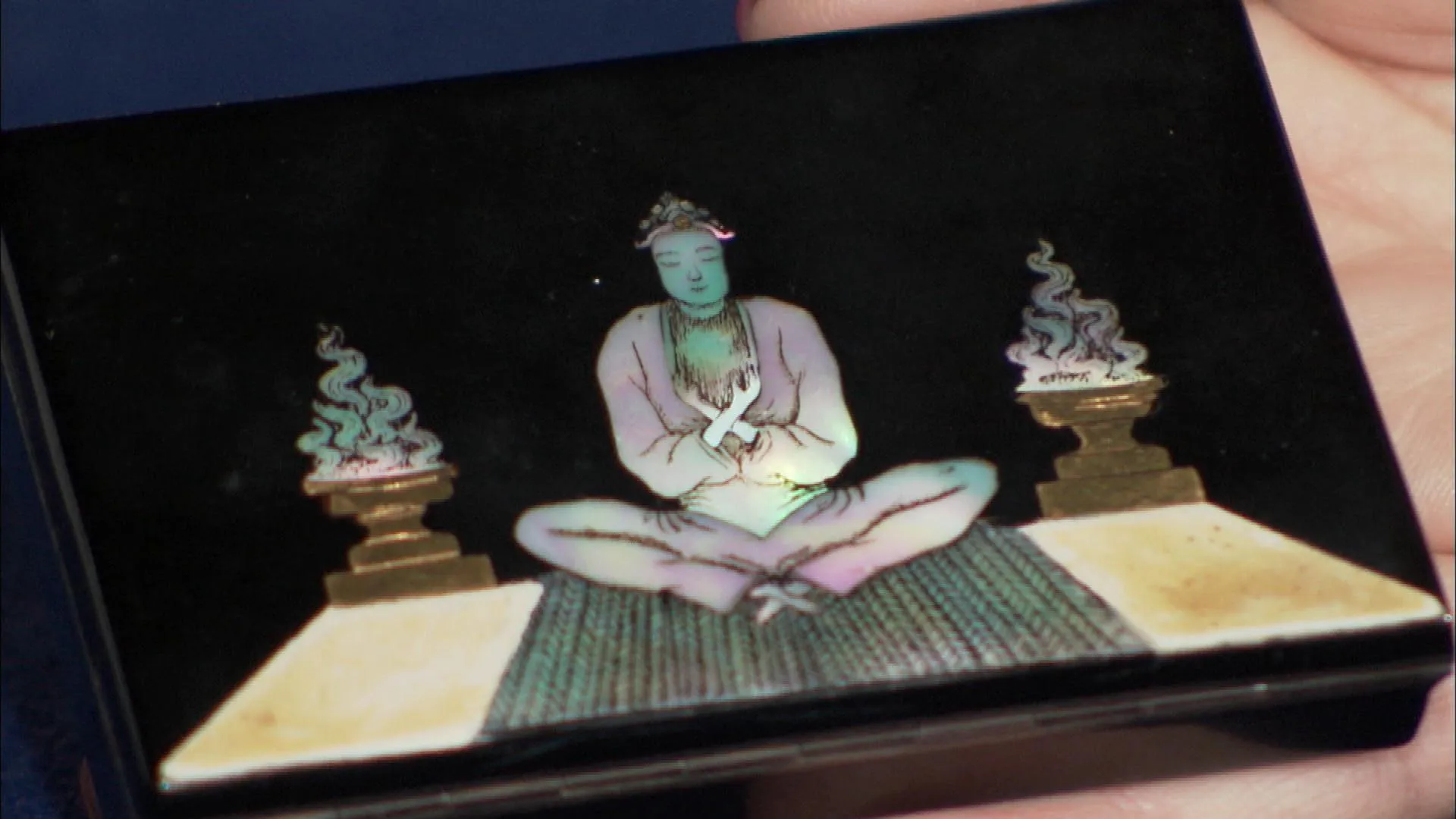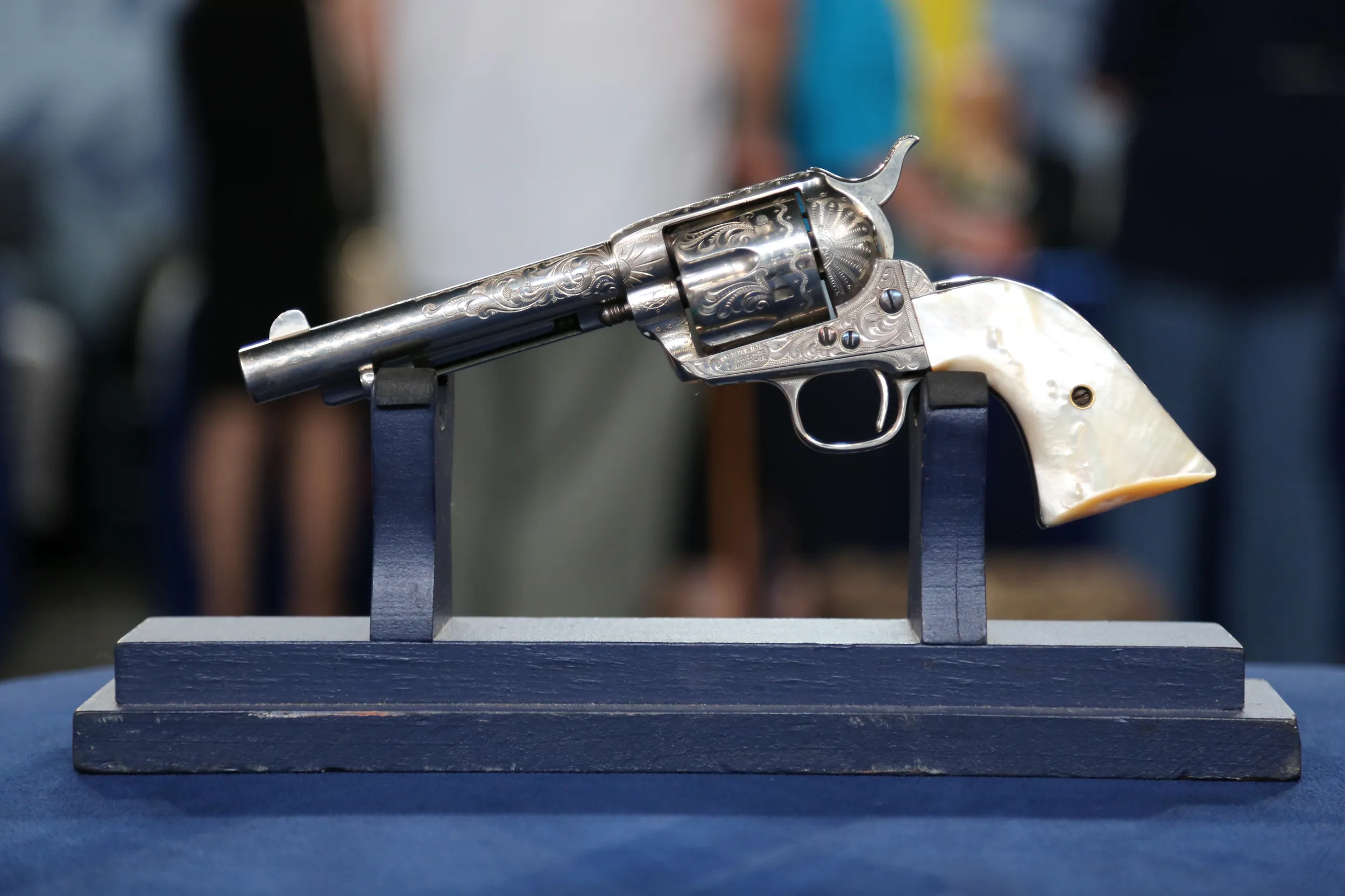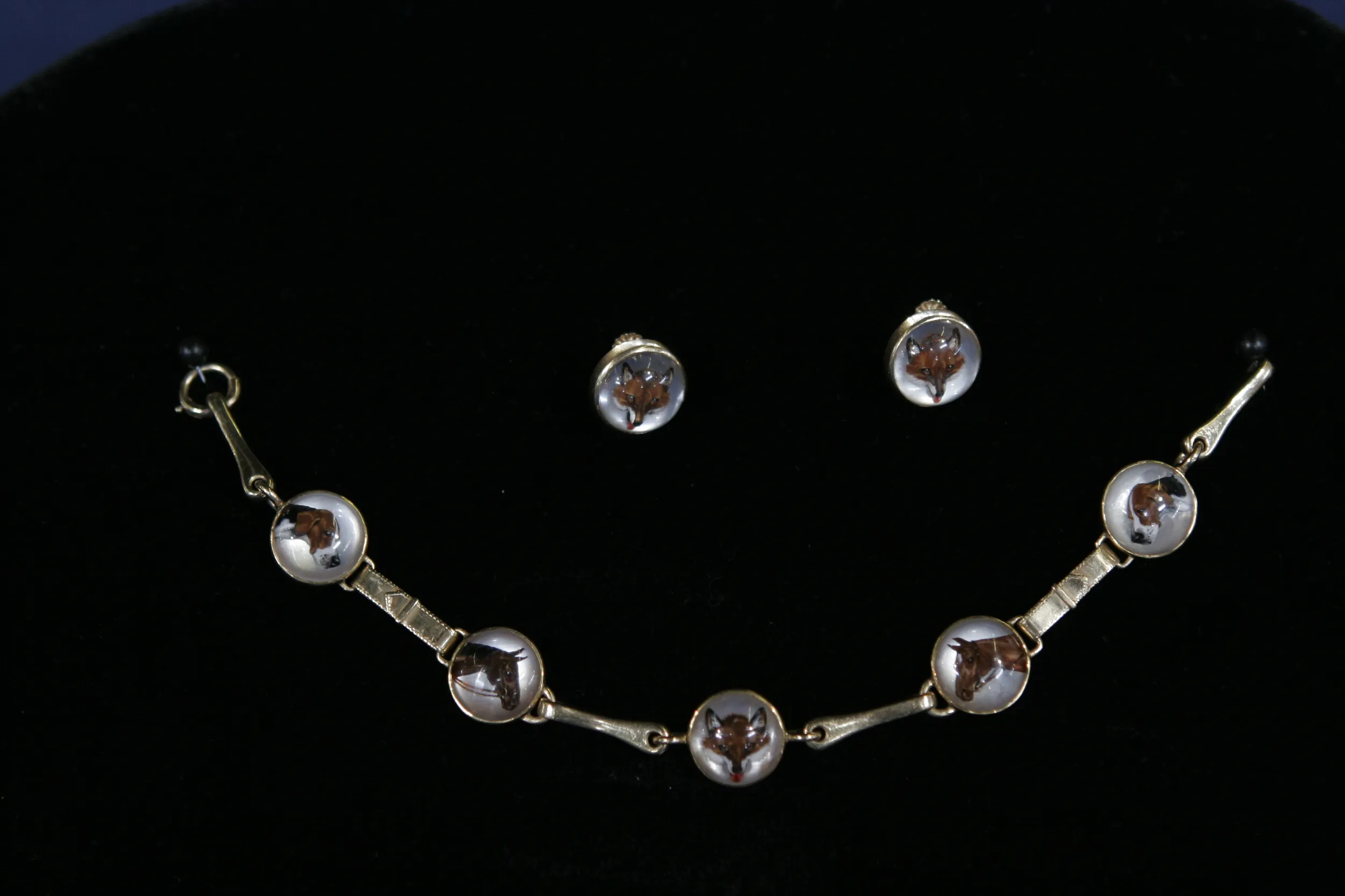GUEST: It was my grandfather's, and when he passed away it came to my sister and I. He started playing in the '30s, when he was a young man, and he played for us as we were kids. All through our growing up years, when we'd get together, he would play with us.
APPRAISER: Well, this is a Gibson banjo, and it's known as the Mastertone. And they had a very special name for it. It was a top-of-the-line instrument that they called the Bella Voce, which means "beautiful voice."
GUEST: Mm-hmm.
APPRAISER: So obviously your grandfather had very good taste in instruments, not only for sound, but for quality. We know what the banjo is.
GUEST: Yeah.
APPRAISER: We know who made it. But we want to guess the age of it. So there are a number of clues that we can look up.
GUEST: Okay.
APPRAISER: Because their design was always evolving through the years. We see the head of it, where the tuning keys are. We have this beautiful inverted violin shape with all kinds of fancy inlay, gold plating, which they did on their top-of-the-line instruments, and coming down the neck we have a very beautiful mother-of-pearl inlay with beautiful binding on the side of the neck. And all around the rim, we have intricate carving, more engraving on the side, and gold plating. Now, this is called a tube and plate rim. And this is a style that was used in the 1930s. And it's also got an arched top, where the edge of the rim causes an arch in the top. And in that ring, we see 40 holes.
GUEST: Okay.
APPRAISER: So we're able to identify it as an archtop 40-hole tone ring. But when we look at the rest of the banjo, the question is, is it really original from the '30s? Because it's just too darn shiny to be that old.
GUEST: Right.
APPRAISER: I have a suspicion that the gold parts were actually replated at some point. Another thing he might have done was to have the back sprayed with a clear coat of lacquer. So that's what gives it a very fresh appearance. You've got some wear on the back of the neck, but the rest of it is this very clear, shiny finish that we don't associate with the 1930s. There are a few things we can look at further to see that it is actually a 1930s Bella Voce.
GUEST: Oh, good.
APPRAISER: We don't even have to take off the back, because very conveniently, the head has been replaced with a modern head, which is transparent. Inside, we see an actual chalk mark which was made by the makers, and that chalk mark is the serial number of the banjo.
GUEST: Okay.
APPRAISER: We also have something that's stamped on the rim of the inside, and this is very important. On the inside rim, we have the stamp that says, "Patent applied for." And that is the clue that it is actually from the 1930s. We have, again, the serial number on the inside of the rim, stamped.
GUEST: Mm-hmm.
APPRAISER: So what you've got here is an original piece. It's great news. It's not a reissue, it's not a reproduction made in the 1960s.
GUEST: Good.
APPRAISER: Any idea of its value?
GUEST: None, no.
APPRAISER: No idea?
GUEST: No.
APPRAISER: Okay, well, we're going to make a little adjustment for the fact that it's been clear-coated...
GUEST: Okay.
APPRAISER: ...and for the fact that it's been replated. But I'm going to give this a retail value, or a replacement value, of about $15,000.
GUEST: Oh, my. Fifteen?
APPRAISER: $15,000.
GUEST: Wow, great.
APPRAISER: So how long has it been since you've heard it played?
GUEST: Probably the early '90s, so 20 years.
APPRAISER: So probably 20 years.
GUEST: Yeah.
APPRAISER: Would you like to hear a few notes now?
GUEST: I would love to, yeah.
APPRAISER: Well, let's see if it's in tune.
GUEST: All right, thanks.












